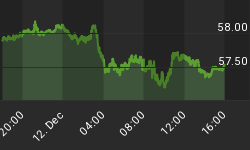Here is an extract from commentary posted at The current debate between stock-market bulls, bears, and innocent bystanders, revolves around the following question: Is this a rally in an on-going bear market or a new bull market? Or, amongst those in the bullish camp the question would be: Is this a cyclical bull market within an on-going secular bear market or the early part of a new secular bull market? There is, however, one question we think is valid but which is never asked, at least in the presence of polite company. That question is; has a bear market started? At first glance the above question seems absurd given the massive declines in many stocks over the past 3 years, particularly the stocks of any company involved in the tech industry. After all, an 80% decline in the NASDAQ100 Index from peak to trough could hardly be described as anything other than a severe bear market. However, while it is crystal clear that certain sectors have experienced bear markets of historic proportion, it is not so clear that the overall market has been immersed in a major bear trend. Support for the above statement is provided by the following chart of the NYSE advance-decline line (a cumulative daily total of the number of advancing stocks minus the number of declining stocks). The chart shows that the A-D Line has been trending higher over the past 3 years, has just moved to a 5-year high, and is not far from the major peak reached during the first half of 1998. The popular explanation for the extraordinary performance of the A-D Line over the past few years is that this measure of market breadth has been distorted by the fact that there are so many interest-rate-sensitive stocks (stocks that benefit from lower interest rates) now trading on the NYSE. The popular thinking is that the relentless downward trend in interest rates has created an artificial rally in the A-D Line. This may be a valid explanation, but the point is that there has never been a major bear market in the past that was accompanied by a rising A-D Line.

Further support is provided by the below 9-year chart of the Bank Stock Index (BKX). The BKX has traded sideways for 6 years and is now near the top of its range and only marginally below its all-time high. The lengthy consolidation in the bank stocks might eventually lead to a downside break, but it is not fair to say that this important sector has experienced a bear market over the past few years. Once again the chart can probably be explained by the relentless downward trend in interest rates, but during major bear markets bank stocks typically fall sharply regardless of falling interest rates.

So, what has actually happened over the past 3 years if a secular bear market hasn't yet begun? The below charts provide a clue.
The first chart shows the ratio of the NASDAQ100 Index (NDX) and the Dow Industrials Index over the past 9 years. Notice that at last year's bottom the NDX/Dow ratio was back to near its 1996 low. In other words, the market action between March of 2000 and October of 2002 wiped away the excess in the NDX relative to the Dow that had developed over the preceding 4 years. The second chart shows the ratio of the S&P500 Index and the XAU over the past 20 years. During the final quarter of 2000, when the S&P/XAU ratio was 27, we forecast that it would reach 10 within 2 years. This was the minimum decline needed to bring the ratio back into line with its long-term trend. Thanks to the poor performances of ABX and PDG the ratio didn't quite make it all the way back to 10, but it got close.


The above charts suggest that the market action of 2000-2002 was more a correction of the excesses in certain sectors relative to other sectors than it was an all-encompassing bear market. In other words, the market has gone a long way towards removing relative excesses, but valuations are still very high because the overall market excess resulting from the great US credit expansion has not yet been addressed.
At this stage we are willing to seriously consider the possibility that a secular bear market has not yet begun. That doesn't mean that we think the Dow or the S&P500 have a fighting chance of reaching new all-time highs over the next 1-2 years (for the record, we don't think that is a realistic possibility). However, rather than wondering about whether the latest rally represents a new bull market or a rebound within an on-going bear market, it might be more appropriate to consider everything that has happened over the past 5 years or so to be a giant topping process and that the bear market actually lies in the future.
















